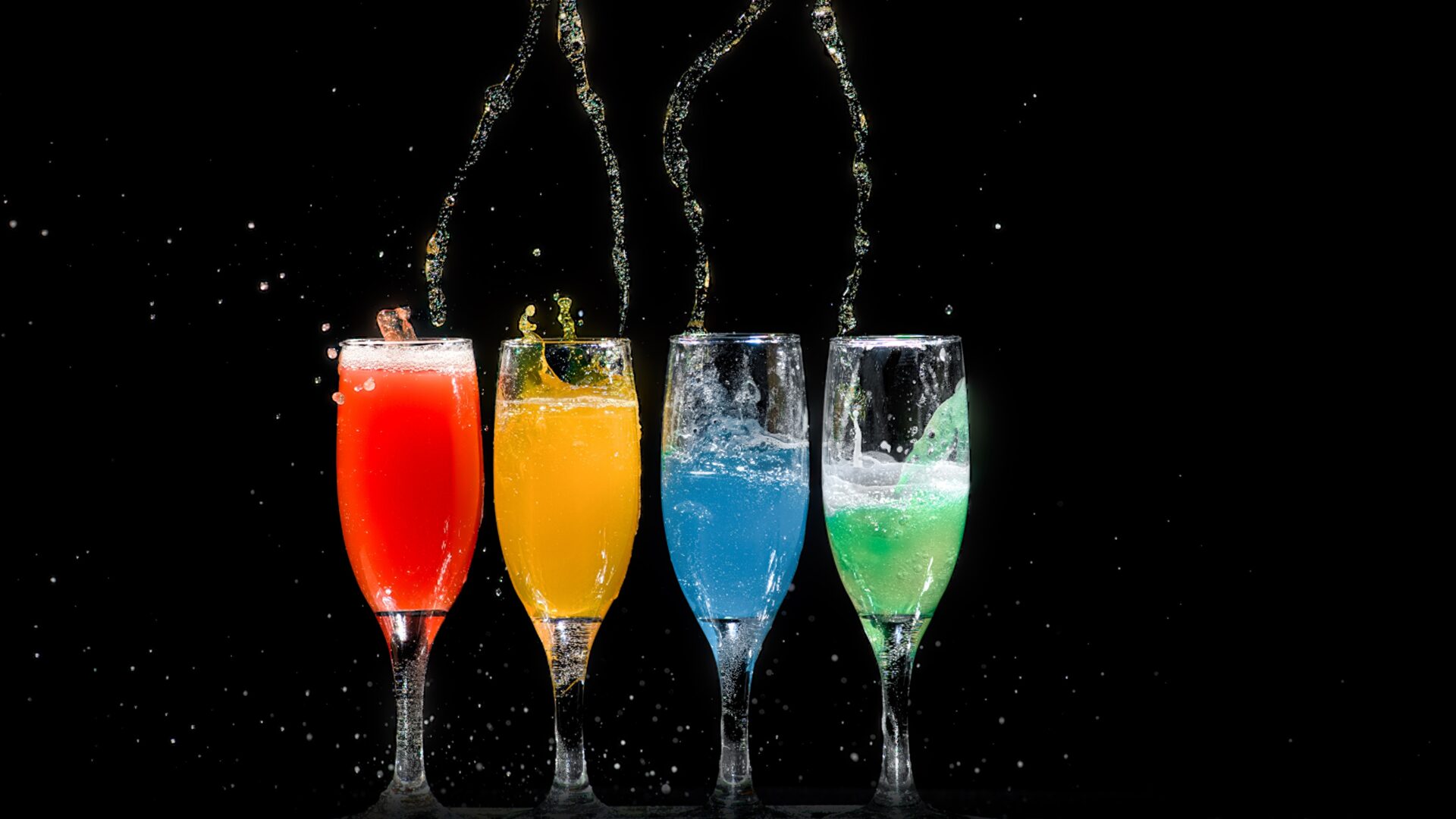Table of Contents
A Comprehensive Guide to Wine Color: Unveiling the Spectrum of Wine: Wine, a symbol of sophistication and elegance, is a world of its own, with a rich palette of colors that reflect its diversity. The color of wine is more than just a visual delight; it provides a glimpse into the wine’s age, grape variety, and even the region it originates from. This comprehensive guide aims to demystify the world of wine colors, providing practical insights for both novice wine drinkers and seasoned connoisseurs.
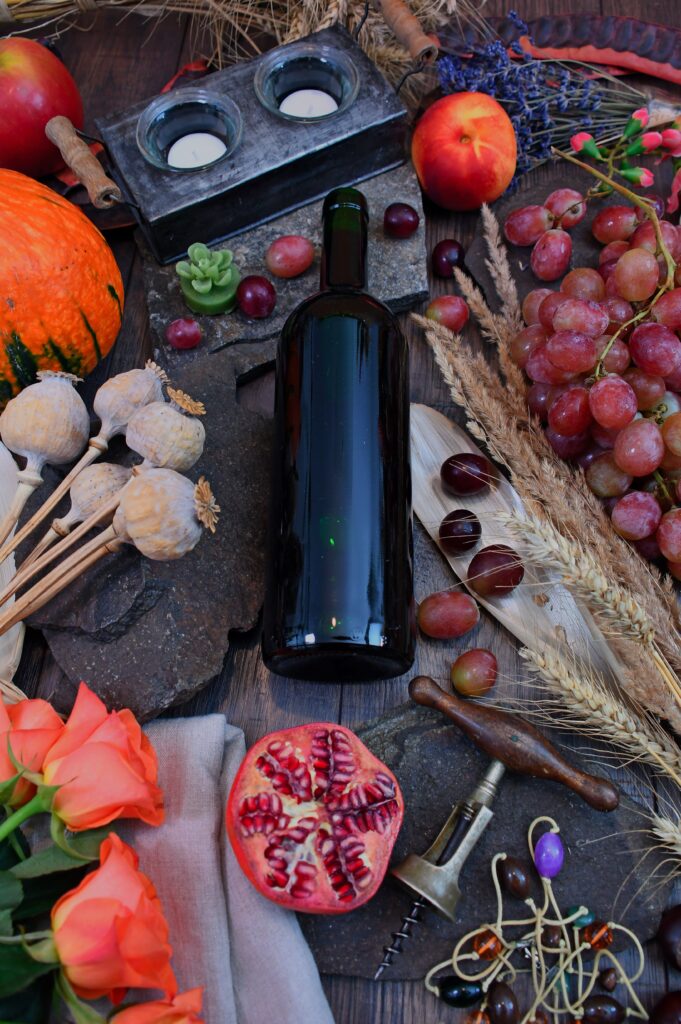
Wine Color Basics
The color of wine is primarily determined by the grape variety used and the length of time the grape skins are in contact with the juice during the winemaking process. The pigments in grape skins give wine its color, and the longer the skins are left in contact with the juice, the darker the wine will be.
Wine Color: A Deeper Dive into the Basics
Beyond the initial factors of grape variety and skin contact, several other elements contribute to the final color of wine. These include the winemaking process, aging, and even the wine’s overall health.
Winemaking Process: The method of winemaking can significantly influence a wine’s color. For instance, oak aging can darken a wine and give it a richer, golden hue. On the other hand, stainless steel fermentation tends to preserve the wine’s original color, resulting in a lighter, more vibrant appearance.
Aging: As wines age, their color evolves. White wines generally darken with age, moving from a pale straw color to a deeper amber or gold. Conversely, red wines tend to lighten and lose their vibrant purple or ruby tones, shifting towards a brick or tawny color. This change in color is due to the oxidation process and the gradual breakdown of pigments over time.
Wine’s Health: The color of wine can also indicate its health. For example, a young red wine that appears brown or overly brick-colored may have been prematurely oxidized or improperly stored. Similarly, a white wine with an intense gold or brown color could indicate oxidation, suggesting that the wine may be past its prime.
Note: The color of wine is a fascinating subject that goes beyond mere aesthetics. It’s a window into the wine’s life story, revealing its age, how it was made, and even how well it has been preserved. So, the next time you pour a glass of wine, take a moment to appreciate its color before you take that first sip. It’s an integral part of the wine tasting experience, adding another layer of depth and complexity to the world of wine.
White Wines
Contrary to common belief, white wines are not made from white grapes but from green or yellow ones. The juice is separated from the skins immediately after crushing, resulting in a color range from pale yellow-green to golden yellow. Popular white wine varieties include Chardonnay, Sauvignon Blanc, and Riesling. Chardonnay, originating from Burgundy, France, often has a golden hue, while Sauvignon Blanc, primarily from the Loire Valley and Bordeaux, is lighter, leaning towards a greenish tint.
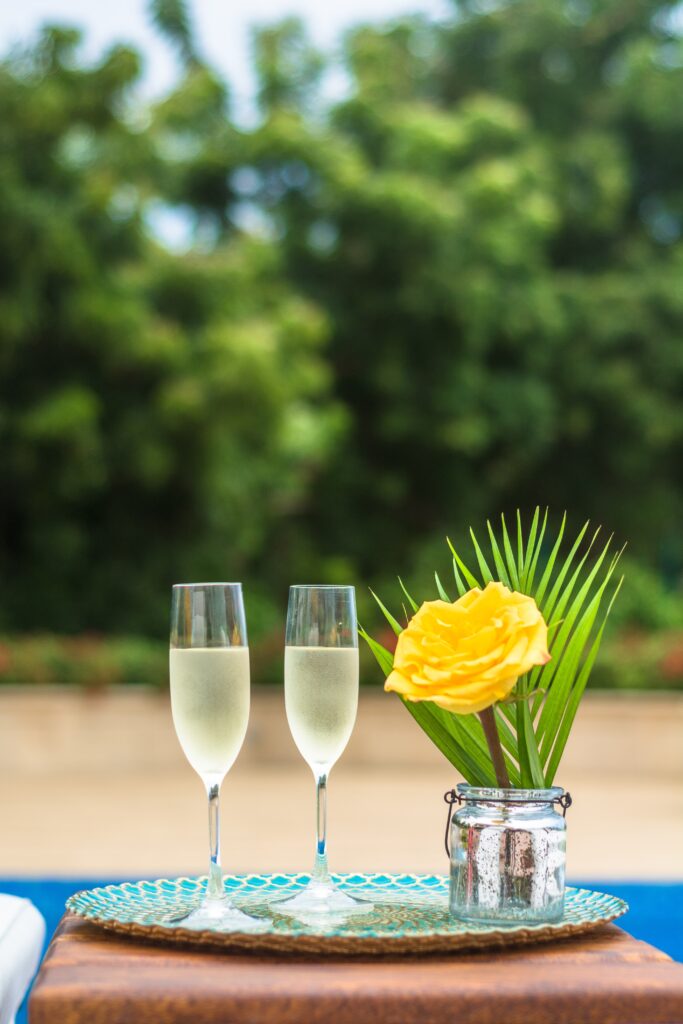
White Wines: A Closer Look
White wines are a cornerstone of the wine world, offering a diverse range of flavors, aromas, and colors. As mentioned earlier, they are typically produced from green or yellow grapes, with the juice quickly separated from the skins to prevent coloration. However, the variety of the grape, the terroir, and the winemaking process all contribute to the final color, aroma, and taste of the wine.
Chardonnay: The Chameleon Grape
Chardonnay is one of the most popular white wine grapes, known for its versatility. Originating from Burgundy, France, it’s now grown worldwide, from California to Australia. The color of Chardonnay wines can vary significantly depending on the region and winemaking techniques. Cooler climates tend to produce wines with a greenish hue and crisp, apple-like flavors, while warmer climates result in golden-colored wines with tropical fruit notes. Oak aging can also influence the color, making it more golden, and impart flavors of vanilla and butter.
Sauvignon Blanc: The Wild White
Sauvignon Blanc, with its origins in the Loire Valley and Bordeaux in France, is another widely planted white grape variety. It’s known for its vibrant acidity and green flavors like grass, gooseberry, and green bell pepper. The color of Sauvignon Blanc wines is usually on the paler side of the spectrum, often with a greenish tint. In cooler climates, the wine can be almost colorless, while in warmer climates, it takes on a more yellow hue.
Riesling: The Aromatic White
Riesling is a white grape variety originating from the Rhine region of Germany. It’s known for its floral, aromatic qualities and high acidity. Riesling wines can range from bone-dry to very sweet, and they’re often pale in color, with a straw-yellow to greenish tint. The wine’s high acidity means it can age well, and as it does, it develops a deeper golden color.
Pinot Grigio/Pinot Gris: The Grey Grape
Pinot Grigio, also known as Pinot Gris, is a white grape variety with a grayish-blue fruit, accounting for its name, which translates to ‘grey grape’. The wines produced from Pinot Grigio can vary dramatically depending on where it’s grown and how it’s made. Italian styles (Pinot Grigio) are typically light-bodied, crisp, and have a pale straw color. In contrast, French styles (Pinot Gris) from regions like Alsace are often richer, more full-bodied, and have a deeper, golden color.
Note: The world of white wines is as diverse as it is fascinating. The color of the wine can tell you a lot about what you can expect when you take that first sip. Whether you prefer a crisp, pale Sauvignon Blanc or a rich, golden oak-aged Chardonnay, there’s a white wine out there to suit every palate.
Orange Wines
Orange wines, also known as amber wines, are made from white grapes but processed like red wines. The grape juice is left in contact with the skins for an extended period, resulting in a unique orange hue. This ancient winemaking technique, originating from Georgia, imparts a robust flavor profile to the wine, with notes of dried fruit, honey, and nuts. Notable grape varieties for orange wines include Ribolla Gialla from Italy and Pinot Gris from France.
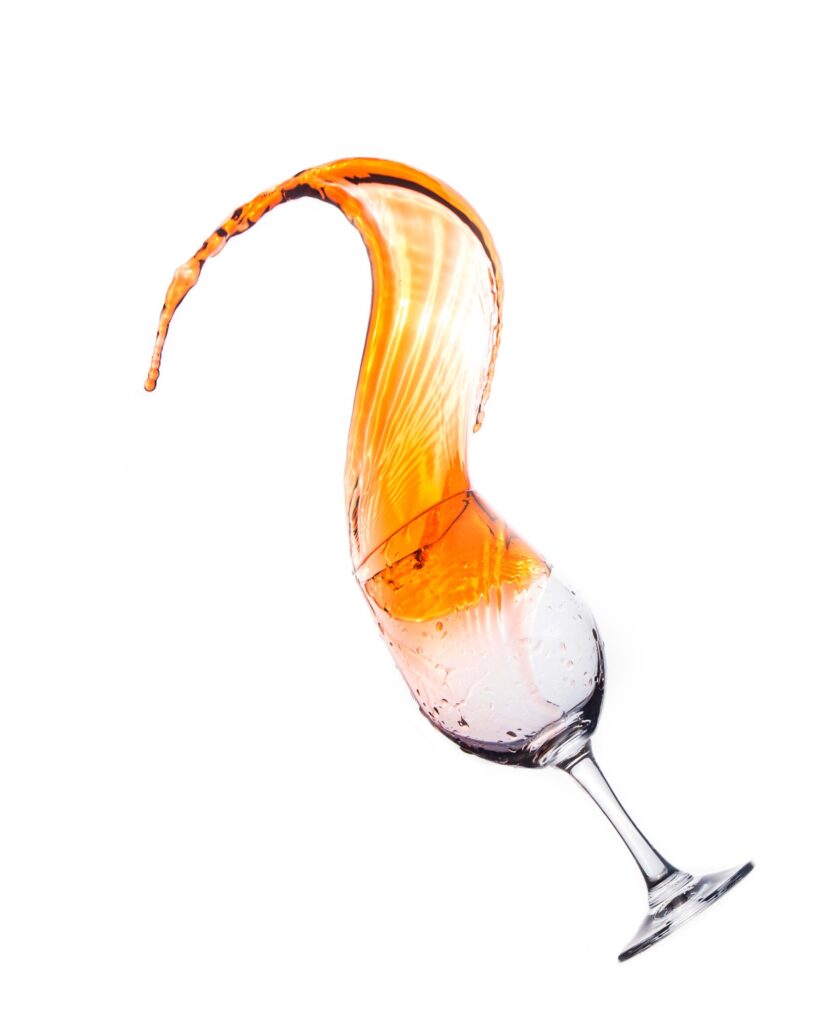
Orange Wines: An Ancient Tradition Revisited
Orange wines, despite their recent surge in popularity, are not a new phenomenon. This style of wine dates back thousands of years, with its roots in the Caucasus region, specifically in the country of Georgia. Here, winemakers have been producing orange wines in traditional clay vessels known as qvevri for over 8,000 years.
The Making of Orange Wines
Orange wines are made from white grape varieties, but unlike typical white wines, the grape juice is left to macerate with the skins and seeds for an extended period. This process, known as skin contact, can last anywhere from a few days to several months, depending on the desired style of the wine. The extended skin contact imparts a deep amber or orange color to the wine, hence the name ‘orange wine’. It also contributes to the wine’s robust flavor profile and tannic structure, similar to red wines.
Flavor Profile and Pairing
Orange wines are known for their complex and unique flavor profile. They often exhibit notes of dried fruit, honey, nuts, and a distinct ‘earthy’ quality. Their bold flavors and tannic structure make them versatile for food pairing. They can stand up to dishes that are typically challenging to pair with wine, such as ethnic cuisines with robust flavors and fermented foods.
Notable Varieties and Regions
While Georgia is the birthplace of orange wines, many other regions have embraced this winemaking style. In Italy, the Friuli-Venezia Giulia region is renowned for its orange wines, particularly those made from the Ribolla Gialla grape. In Slovenia, the winemakers along the border with Italy also produce notable orange wines.
Pinot Gris, a grape with a naturally pinkish-grey skin, is often used to make orange wine in regions like Alsace in France and Oregon in the United States. The resulting wines have a beautiful copper hue and a rich, aromatic profile.
Note: Orange wines, with their unique production process and intriguing flavors, offer a fascinating alternative to the more conventional white, rosé, and red wines. They represent a return to ancient winemaking traditions, providing a unique and exciting option for wine enthusiasts to explore.
Unveiling the Amber Mystique: A Spotlight on Three Exemplary Orange Wines
The color of orange wines can vary significantly depending on the grape variety used and the length of skin contact during fermentation. Regardless of the specific hue, the color of orange wines is a testament to the winemaker’s art, reflecting a balance between tradition and innovation in the pursuit of unique and expressive wines.
Ribolla Gialla: This is a white grape variety native to the Friuli-Venezia Giulia region in northeast Italy. When made into an orange wine, Ribolla Gialla is left to macerate with its skins for an extended period, often several months. The result is a wine with a deep amber or orange color. The intensity of the color can vary depending on the length of skin contact, with longer maceration periods resulting in a deeper, more vibrant orange.
Pinot Gris: Despite its name, which translates to ‘gray Pinot’, Pinot Gris grapes actually have a pinkish-gray skin. When made into an orange wine, the grape juice is left in contact with the skins, extracting color and resulting in a wine with a beautiful copper or light orange hue. This is a common practice in regions like Alsace in France and Oregon in the United States, where Pinot Gris is widely grown.
Gravner Breg: This is a notable example of an orange wine from the Friuli-Venezia Giulia region in Italy. It’s a blend of several grape varieties, including Sauvignon Blanc, Chardonnay, Pinot Grigio, and Riesling Italico. The grapes are fermented with their skins in clay amphorae, following ancient Georgian winemaking traditions. The result is a deeply colored orange wine, often described as having a burnt orange or amber hue.
Tawny Wines
Tawny wines, specifically Tawny Port, are a type of fortified wine from Portugal. They undergo a long aging process in wooden barrels, which imparts a nutty flavor and a characteristic tawny color. The color can range from a reddish-brown to a deep amber, depending on the aging period.
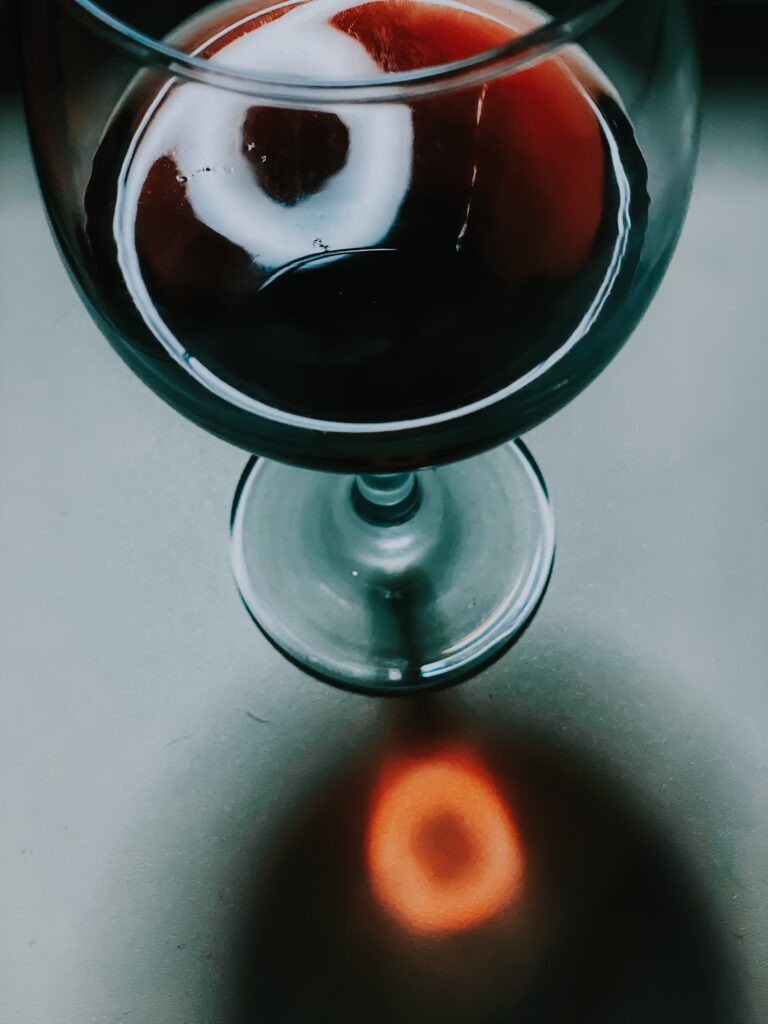
Tawny Wines: A Journey Through Time
Tawny wines, specifically Tawny Port, are a unique and fascinating category of wines that originate from the Douro Valley in Portugal. These wines are a testament to the art of aging and blending, offering a journey through time with each sip.
The Making of Tawny Port
Tawny Port begins its life much like any other Port wine. It’s made from a blend of red grape varieties, with fermentation stopped partway through by the addition of a neutral grape spirit, which boosts the alcohol content and leaves residual sugar in the wine. What sets Tawny Port apart is the aging process.
Tawny Ports are aged in small wooden barrels, known as “pipes,” for an extended period. This prolonged barrel aging exposes the wine to gradual oxidation and evaporation, leading to a change in color from deep ruby to a lighter, tawny hue. The interaction with the wood also imparts complex flavors of nuts, dried fruit, and caramel to the wine.
Understanding Age-Designated Tawny Ports
Tawny Ports often come with an age designation on the label, such as 10, 20, 30, or over 40 years. This number represents the average age of the wines in the blend, not the actual time the wine spent in the barrel. Each age-designated Tawny Port offers a different flavor profile and level of complexity.
For instance, a 10-year-old Tawny Port will have a rich amber color with flavors of dried fruit, honey, and a hint of nuttiness. On the other hand, a 40-year-old Tawny Port will be much lighter in color, almost a light mahogany, with intense flavors of dried fruit, nuts, caramel, and even a touch of vanilla.
Serving and Pairing Tawny Port
Tawny Port is typically served slightly chilled, which helps to highlight its rich, complex flavors. It’s often enjoyed as a dessert wine, pairing beautifully with a wide range of desserts, especially those featuring nuts, caramel, or dried fruit. Aged Tawny Ports can also be enjoyed on their own as a meditative drink, allowing the drinker to fully appreciate their complexity and elegance.
Note: Tawny Port is a testament to the transformative power of time and the skill of the winemaker. It offers a unique tasting experience, with its rich, complex flavors and beautiful tawny color. Whether you’re new to Port wines or a seasoned enthusiast, Tawny Port is a category worth exploring.
The Tawny Tapestry: A Trio of Time-Honored Tawny Ports
10-Year-Old Tawny Port: A 10-year-old Tawny Port is a blend of different wines with an average age of 10 years. At this stage, the wine has begun to develop the characteristic tawny color, a result of gradual oxidation and evaporation in the barrel. The color is often described as a light amber or tawny hue. This is the youngest age designation for Tawny Port, and it offers a fine balance between the fresh fruit flavors of younger wines and the nutty, caramel flavors that come with age.
20-Year-Old Tawny Port: A 20-year-old Tawny Port is a significant step up in terms of age and complexity. The color is a deeper amber or tawny hue, reflecting the longer period of barrel aging. These wines have spent a considerable amount of time in contact with the wood, which imparts complex flavors of dried fruit, nuts, and spices. The color and flavor profile of a 20-year-old Tawny Port make it a favorite among many Port enthusiasts.
40-Year-Old Tawny Port: A 40-year-old Tawny Port represents the pinnacle of aged Tawny Ports. These wines have spent several decades in the barrel, resulting in a deep amber or mahogany color. The extended aging process leads to intense flavors of dried fruit, nuts, caramel, and even a touch of vanilla. Despite their age, 40-year-old Tawny Ports retain a remarkable freshness and acidity, which balances the rich flavors and prevents the wine from becoming overly cloying.
Note: The color of Tawny Port is a visual representation of the wine’s journey through time. It reflects the years of careful aging and blending, resulting in a wine that is as pleasing to the eye as it is to the palate. Whether you’re new to Tawny Port or a seasoned enthusiast, there’s a world of color and flavor to explore within this unique category of fortified wine.
Red Wines
Red wines are made from dark-colored grape varieties. The skins are left in contact with the juice for a longer period, resulting in a spectrum of colors from light ruby to deep purple. Cabernet Sauvignon, a grape variety from Bordeaux, France, produces wines with a deep ruby color, while Pinot Noir, originating from Burgundy, France, results in a lighter, more translucent red.
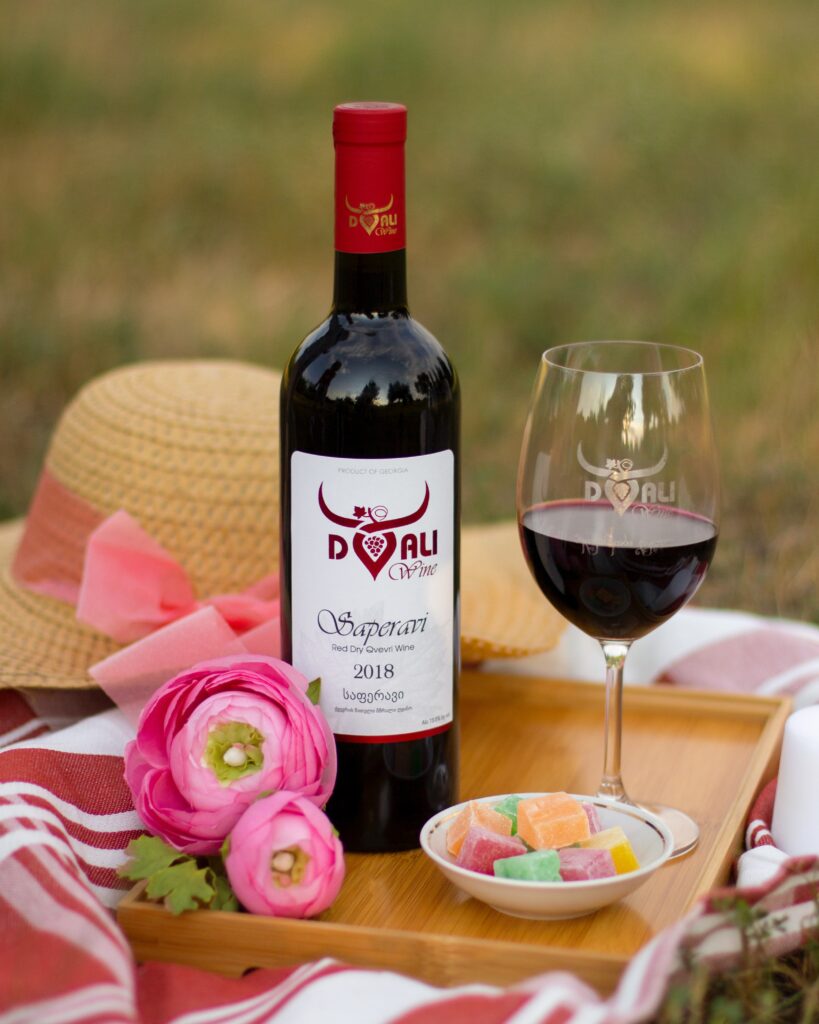
Red Wines: A Spectrum of Colors
Red wines are celebrated for their rich, vibrant colors, which can range from a light, bright ruby to a deep, almost opaque purple. The color of red wine is primarily derived from the grape skins, which are left in contact with the juice during fermentation. This process, known as maceration, not only imparts color but also flavors, tannins, and complexity to the wine.
Influence of Grape Variety
Different grape varieties will produce different colors of wine. For instance, Pinot Noir, a thin-skinned grape, tends to produce lighter, more translucent red wines with a ruby hue. On the other hand, Cabernet Sauvignon, a grape with thicker skins and more natural pigments, produces wines with a deeper, more intense color, often described as garnet or deep ruby.
Influence of Winemaking Techniques
Winemaking techniques can also influence the color of red wine. Longer maceration times and the use of new oak barrels can deepen the color of the wine. Conversely, techniques such as carbonic maceration, often used in Beaujolais Nouveau production, result in a lighter, brighter red color.
Influence of Aging
As red wines age, their color evolves. Young red wines often have a bright, vibrant color, ranging from ruby to deep purple. Over time, as the wine interacts with oxygen, either in the barrel during aging or in the bottle, the color can shift towards a brick or garnet hue. This color change is a natural part of the aging process and can give clues about the wine’s age and maturity.
Notable Red Wine Varieties and Their Colors
Cabernet Sauvignon, known as the “king of red wine grapes,” produces wines with a deep ruby color, which can shift towards garnet with age. These wines are known for their high tannin content and flavors of blackcurrant, plum, and spices.
Merlot, another popular red grape, produces wines with a slightly lighter color, often described as ruby or garnet. Merlot wines are typically less tannic than Cabernet Sauvignon, with lush flavors of plum, black cherry, and chocolate.
Syrah or Shiraz, depending on where it’s grown, is known for producing deeply colored, almost opaque wines. These wines are full-bodied and rich, with flavors of blackberry, plum, and pepper.
Note: The color of red wine is a fascinating subject, offering insights into the grape variety, winemaking techniques, and age of the wine. It’s an integral part of the wine-tasting experience, adding to the visual appeal and anticipation of the flavors to come.
Rosé Wines
Rosé wines, also known as blush wines, are made from red grapes, but the skins are only left in contact with the juice for a short period. This results in a pinkish hue, which can range from a pale salmon to a vibrant pink. Grenache, a grape variety from Spain, and Sangiovese, from Italy, are commonly used to produce rosé wines.
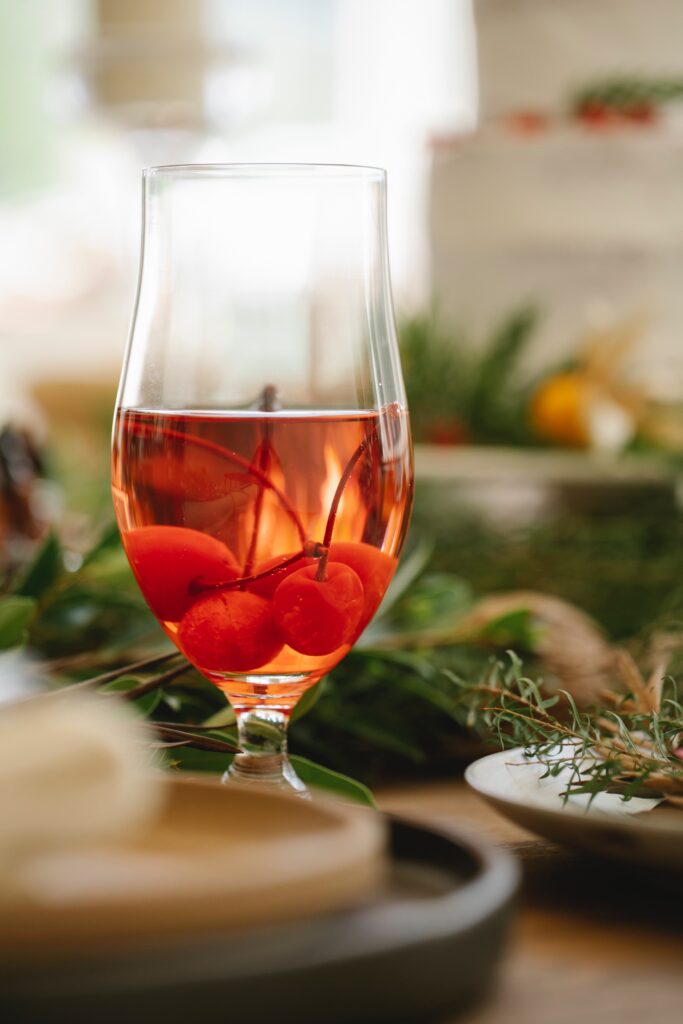
Rosé Wines: A Ballet of Colors
Rosé wines, also known as blush or pink wines, are celebrated for their beautiful range of colors, from the palest pink to a deeper, almost ruby hue. The color of Rosé wines is primarily determined by the type of grape used and the length of skin contact during the winemaking process.
The Making of Rosé Wines
Rosé wines are typically made from red grape varieties. However, unlike red wines, the grape skins are only left in contact with the juice for a short period, usually a few hours to a couple of days. This brief maceration period imparts a pink color to the wine, as well as some tannins and flavors from the skins. The exact shade of pink can be controlled by the winemaker by adjusting the duration of skin contact.
Influence of Grape Variety
Different grape varieties will produce different shades of Rosé. For instance, Grenache, a popular grape for Rosé wines, often produces a bright, vibrant pink color. Pinot Noir, on the other hand, tends to produce Rosé wines with a lighter, more delicate color, often described as salmon or onion skin.
Influence of Region
The region where the grapes are grown can also influence the color of Rosé wines. For example, Provence in France is famous for its pale, almost ethereal Rosé wines. These wines are often made from a blend of grape varieties, including Grenache, Cinsault, and Syrah. In contrast, Spanish Rosados, particularly those from the Navarra region, are typically deeper in color, often a bright, strawberry pink.
Notable Rosé Wine Varieties and Their Colors
Grenache, a grape variety originating from Spain, is one of the most commonly used grapes for Rosé wines. It produces wines with a bright, vibrant pink color and flavors of red fruit, citrus, and melon.
Sangiovese, an Italian grape variety, is often used to make Rosato, the Italian version of Rosé. Sangiovese Rosés typically have a deeper color, often described as cherry or strawberry pink, with flavors of red cherry, strawberry, and spice.
Note: The color of Rosé wine is a delightful visual introduction to the wine’s character. It offers clues about the grape variety, winemaking techniques, and even the wine’s region of origin. Whether you prefer a pale, delicate Provencal Rosé or a bold, vibrant Spanish Rosado, the world of Rosé wines offers a color and style to suit every palate.
Final Thoughts'
Understanding the color of wine is a crucial aspect of the wine-tasting experience. It provides valuable insights into the wine’s age, grape variety, and winemaking process. Whether you’re a novice wine drinker or a seasoned sommelier, we hope this guide has provided you with a deeper appreciation for the beautiful spectrum of wine colors. Remember, the world of wine is a journey of discovery, so don’t be afraid to explore and experiment. Cheers to your wine adventure!
Note: This article is a brief overview of the topic. For a more in-depth understanding, consider enrolling in a wine-tasting course or consulting with a certified sommelier.

